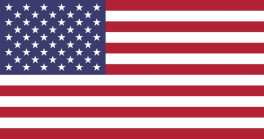Donate to Support Supercluster
Your support makes the Astronaut Database and Launch Tracker possible, and keeps all Supercluster content free.
SUPPORTSupercluster on Patreon
Your support makes the Astronaut Database and Launch Tracker possible, and keeps all Supercluster content free.
SUPPORTThis goes
to space
NROL-68
This is a classified payload for the US National Reconnaissance Office.
On this
rocket
Delta IV Heavy
The Delta IV Heavy is United Launch Alliance’s (ULA’s) rocket for US military operations.
Launching from both Florida and California, ULA plans to retire the rocket in 2024 in favor of the Vulcan rocket, which is capable of doing everything Delta IV Heavy can -- and more -- for one-third the price tag.
The Delta IV Heavy is the most powerful and final variant of the Delta IV family. With a per-flight base cost of at least $350 million USD, the rocket’s price tag is quite a bit more than any other rocket in its class.
Stats
Height: 72 m (236 ft)
Diameter: 5 m (16 ft)
Width: 15 m (49 ft)
Mass: 733,000 kg (1,616,000 lb)
Stages: 2+
Developed in the mid- to late-1990s by Boeing as part of the U.S. government's initiative to create an Evolved Expendable Launch Vehicle (EELV) program for national security missions, the rocket traces parts of its lineage to the Thor-Delta launch vehicle that debuted in 1960.
The two companies that developed EELV rockets -- Lockheed Martin with Atlas V and Boeing with Delta IV -- merged those specific assets in 2006 under a new company, ULA.
Despite a stellar success record of 100% per the payload customer's point of view, the Delta IV's price tag prohibited it from competing successfully on the commercial market.
Image: ULA
From this
launch site
SLC-37B - Cape Canaveral Air Force Station, Florida
SLC-37B
Part of a two-launch-pad complex, SLC-37B is currently used by United Launch Alliance for their Delta IV Heavy rocket.
Built in 1959 as a dual pad with -37A, NASA accepted only -37B for their Apollo Program in 1963 and modified the pad for Saturn I and Saturn IB rockets.
Despite its role in the Apollo Program, SLC-37B has never launched humans into space.
The pad hosted 8 Apollo launches from 1964 to 1968 and then went unused for 34 years before United Launch Alliance took possession of it for the Delta IV rocket's east coast launch pad.
It has since hosted over 30 Delta IV missions.
The pad was the launch site for:
- NASA’s unpiloted test flight of the Orion crew capsule in 2014, and
- NASA’s historic Parker Solar Probe -- the only human spacecraft to graze the surface of the Sun -- in 2018.
SLC-37A has never been used.
Cape Canaveral
SLC-37B is located on Cape Canaveral, the primary launch center for the United States.
The Cape has four currently-active launch pads for the Atlas V, Delta IV Heavy, Falcon 9, and Minotaur rockets.
Located on Florida’s east coast, Cape Canaveral provides a wide range of access to space for missions to the Space Station, Geostationary Earth Orbit, the Moon, inter-planetary targets, polar trajectories, and more.
The Cape is ideally suited for reaching all locations in space the U.S. needs access to while launching exclusively out over the open Atlantic Ocean so as not to endanger anyone on the ground.
NASA's Kennedy Space Center, which occupies neighboring Merritt Island, and Cape Canaveral are often confused with each other or referred to as a single place. They are in fact separate government installations and launch sites.
Cape Canaveral has hosted numerous history-making rocket launches:
- first U.S. Earth satellite in 1958,
- first U.S. astronaut in 1961,
- first U.S. astronaut in orbit in 1962,
- first two-person U.S. spacecraft 1965, and
- first U.S. uncrewed lunar landing in 1966
Image: ULA
GET THE SUPERCLUSTER APP
THE SUPERCLUSTER PODCAST
A podcast exploring the amazing milestones that changed space history, the wildest ideas that drive our future, and every development in this new Golden Age of Space.
Donate to support
Your support makes the Astronaut Database and Launch Tracker possible, and keeps all Supercluster content free.
SupportCOPYRIGHT 2021 SUPERCLUSTER LLC


